Jack Parsons was a self-taught rocket scientist who invented the fuel that would eventually send the Space Shuttle into orbit, but he also rubbed elbows with occultist Aleister Crowley and allegedly attempted to summon a sex goddess with L. Ron Hubbard.
Once upon a time, the idea of humans exploring space was relegated strictly to the realm of science fiction. That changed, however, in the mid-20th century when a group of pioneering young scientists began developing rockets and technology that would eventually put man on the Moon. Among these early trailblazers was Jack Parsons.
Today, though, Jack Parsons’ name is rarely mentioned in history books. This is strange, given his contributions to space travel — but there is perhaps a reason for it. In addition to being a brilliant rocket scientist, Jack Parsons was involved in occultist practices, particularly Thelemic rituals, a series of esoteric beliefs put forth by Aleister Crowley in the early 1900s.

Public DomainRocket scientist and occultist Jack Parsons in 1938.
Parsons was also housemates, for a time, with the founder of Scientology, L. Ron Hubbard — although the partnership was short-lived.
What’s more, Parsons was ultimately accused of espionage, leading him to be cast out from the scientific community. Ultimately, Parsons’ short life came to a sudden, dramatic end in 1952, leaving behind a complicated — and fascinating — legacy.
The Early Life Of Jack Parsons
It was the outlandish stories that Jack Parsons read in pulp science fiction magazines that first sparked his interest in rockets.
He was born in Los Angeles, California, on Oct. 2, 1914, but his parents separated soon after he was born. He grew up on “Millionaire’s Row” in Pasadena with plenty of money but few friends. Parsons spent much of his time reading mythology, legend, and science fiction, particularly the works of Jules Verne and pulp fiction magazines.

Public DomainAmazing Stories, a science fiction pulp magazine that Jack Parsons read as a child.
Oddly, given what Parsons would later achieve, he performed poorly in school at a young age. In Strange Angel, his biographer George Pendle attributed this to undiagnosed dyslexia. School wasn’t easy for Parsons socially, either; he was often bullied for coming from a rich family and having effeminate mannerisms.
But it was during these formative years that he met Edward Forman, a child who frequently defended Parsons from bullies and, like Parsons, had an interest in science fiction. Eventually, the two began conducting their own rocketry experiments. Later, they would work together to help send America to space.
Becoming A Pioneering Rocket Scientist
Jack Parsons began his first experiments in his own backyard, where he would build gunpowder-based rockets along with Ed Forman.
Unfortunately for Parsons, the Great Depression affected his family like it did many others, and Parsons was forced to drop out of college due to financial difficulties.
Then, in 1934, Parsons and Forman decided to approach Frank Malina, a graduate student at the California Institute of Technology, and form a small group devoted to the study of rockets that self-deprecatingly referred to themselves as the “Suicide Squad,” given the dangerous nature of their work.
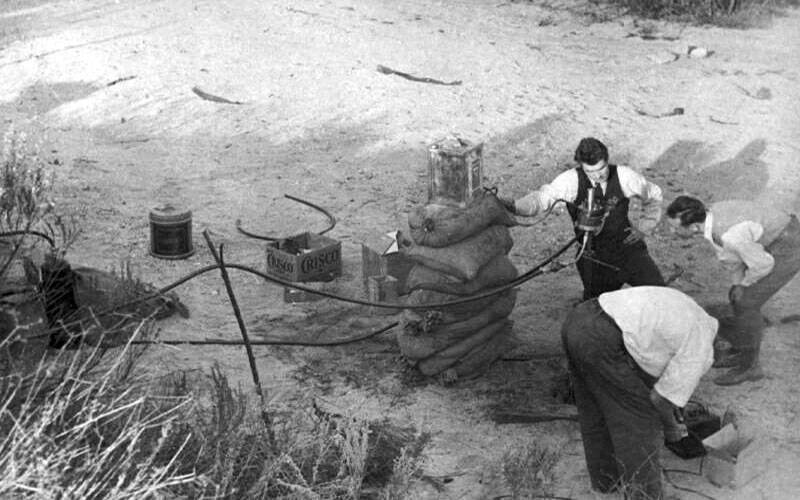
NASA/JPLJack Parsons and colleagues testing a rocket motor in the Arroyo Seco, October 1936.
In the late 1930s, when the Suicide Squad began conducting their explosive experiments, rocket science was nothing more than science fiction. In fact, when engineer and professor Robert Goddard proposed in 1920 that a rocket could one day be capable of reaching the Moon, he was widely mocked by the press, including The New York Times. The paper was actually forced to issue a retraction in 1969, as Apollo 11 was on its way to the Moon.
Nevertheless, the Suicide Squad quickly realized that Jack Parsons was a genius at creating rocket fuel, a delicate process that involved mixing chemicals in exactly the right amounts so that they would be explosive, yet controllable. (Versions of the fuel he developed were later used by NASA).
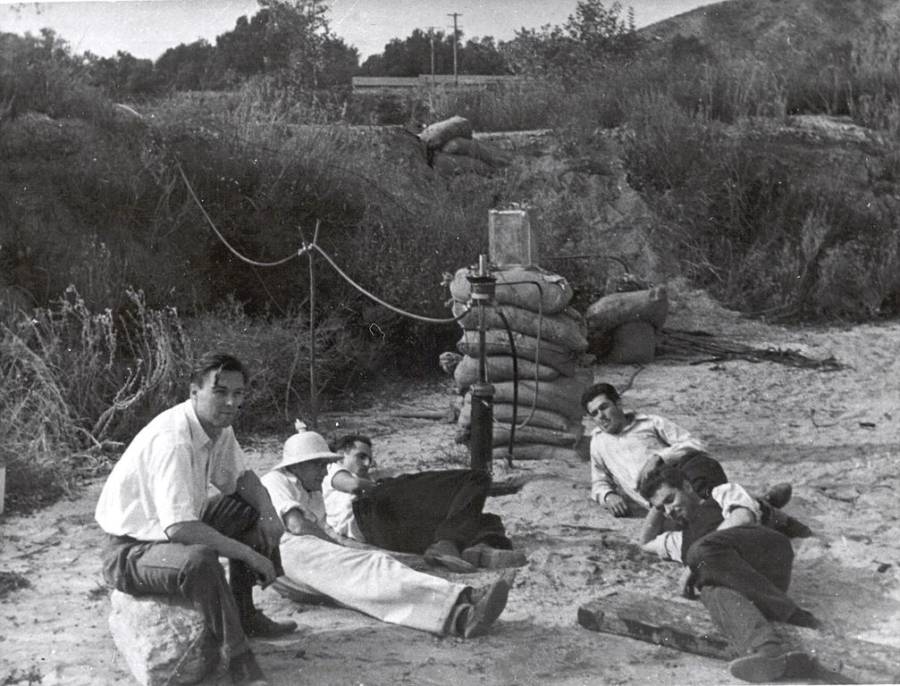
NASA/JPLThe “Suicide Squad”: Frank Malina (center), Ed Forman (to Malina’s right), and Jack Parsons (far right) with two colleagues, November 1936.
By the dawn of the 1940s, Malina had approached the National Academy of Sciences for funding to study “jet propulsion” — and suddenly rocket science was not just outlandish science fiction.
In 1943, the former Suicide Squad (by then known as the Aerojet Engineering Corporation) saw their work legitimized as they played a crucial role in founding what would become NASA’s Jet Propulsion Laboratory, the research center that’s sent spacecraft beyond the reaches of our solar system.
However, although more government involvement led to greater success and opportunities for Jack Parsons, it also meant closer observation of his personal life — which revealed some shocking secrets.
Occult Interests And Aleister Crowley’s Sex Cult
At the same time that Jack Parsons was pioneering scientific developments that would eventually help put man on the Moon, he was also engaging in activities that had newspapers referring to him as a “madman.” While developing rocket science itself, Parsons had been attending meetings of the Ordo Templi Orientis (OTO), led by notorious British occultist Aleister Crowley.

Public DomainAleister Crowley in 1910.
Popularly known as “the wickedest man in the world,” Crowley encouraged his acolytes to follow his one commandment: “Do what thou wilt.” Although many of the OTO’s creeds were based more around fulfilling individual desires (particularly sexual ones) than, for example, communing with the Devil, Parsons and other members did partake in some strange rituals, including eating cakes made of menstrual blood.
And Parsons’ interest in the occult did not wane as his career progressed — quite the contrary, in fact. He was appointed the West Coast leader of the OTO in the early 1940s and corresponded directly with Crowley himself.
He even used the money from his rocketry business to buy a mansion in Pasadena, a den of hedonism that allowed him to explore sexual adventures like bedding his wife’s 17-year-old sister and holding cult-like orgies.
According to Strange Angel, Frank Malina’s wife, Liljan, said in a 1996 interview with Benjamin Zibit that the mansion was “like walking into a Fellini movie. Women were walking around in diaphanous togas and weird make-up, some dressed up like animals, like a costume party.” Malina shrugged off his partner’s eccentricities, telling Liljan, “Jack is into all kinds of things.”
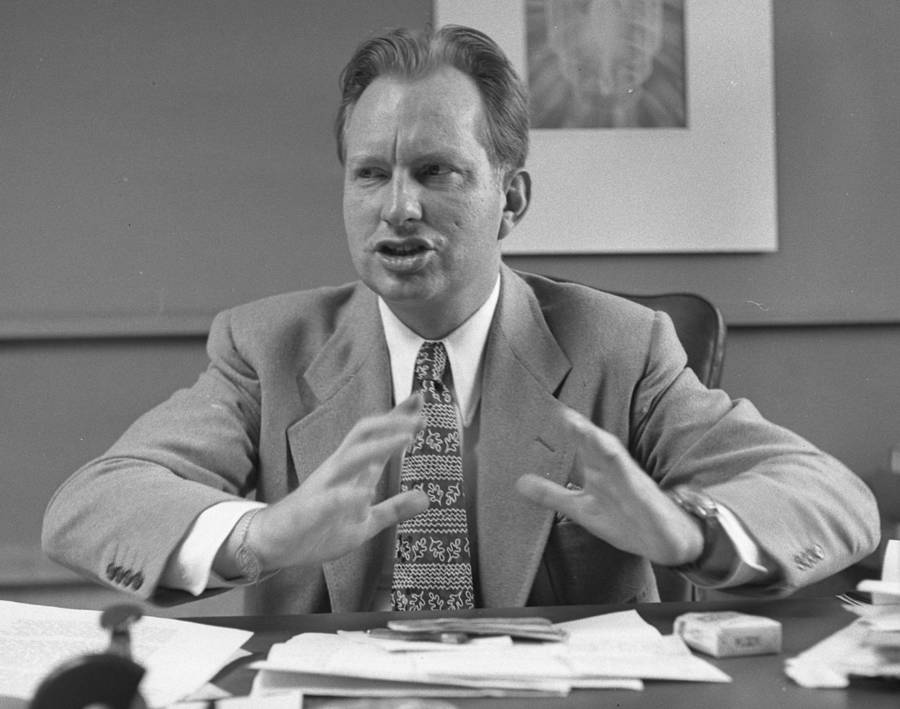
UCLA Library/Wikimedia CommonsL. Ron Hubbard in 1950.
The U.S. government, however, was not able to dismiss Parsons’ activities so easily. The FBI began to surveil Parsons more closely and decided that his quirks were a liability to national security. In 1944, he was paid off for his shares in Aerojet and essentially expelled from the field that he had helped develop.
Without work, Jack Parsons buried himself ever deeper in the occult. Then, things took a turn when the former scientist became acquainted with the science fiction writer and future Scientology founder L. Ron Hubbard.
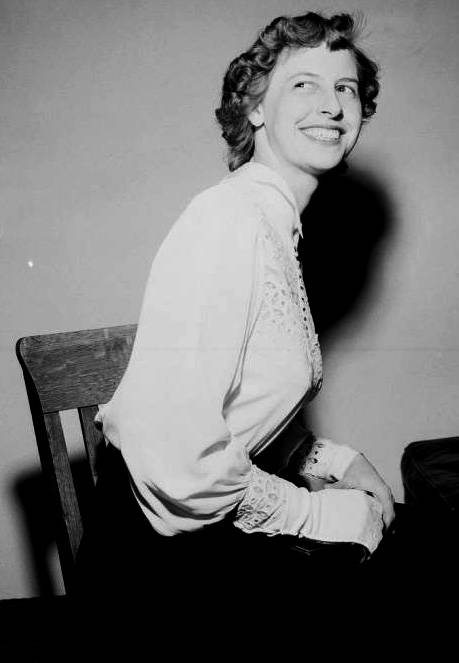
USC Digital Library/Wikimedia CommonsSara Elizabeth “Betty” Northrup in April 1951.
According to Hugh Urban’s The Church of Scientology: A History of a New Religion, published by Princeton University Press in 2011, Parsons wrote “The Book of Babalon,” in which he claimed that he and Hubbard carried out a ritual together. This ritual, Parsons claimed, succeeded in summoning a magical “moonchild” who would be “mightier than all the kings of the Earth.”
Then, Urban writes, Parsons, Hubbard, and Parsons’ girlfriend Betty Northrup formed a partnership called Allied Enterprises to make money buying and selling yachts. Parsons came to believe that Hubbard and Northrup had taken his life savings and run off together, so he tried to summon yet another demon to punish them and filed a lawsuit that was quickly settled out of court.
In December 1969, the Church of Scientology published a statement in the London Sunday Times stating that Hubbard’s involvement with Parsons was part of a clandestine mission he’d been sent on by the U.S. Navy to “[break] up black magic in America.” The group wrote, “He went to live at the house and investigated the black magic rites and the situation and found them very bad… Hubbard rescued a girl they were using. The black magic group was dispersed and destroyed.”
Indeed, Parsons sold the Pasadena mansion and withdrew from the cult shortly after his ordeal with Hubbard, though it’s not clear exactly what sparked his resignation — but his hardships weren’t over yet.
Jack Parsons’ Final Years And Dramatic Death
During the onset of the Red Scare in the late 1940s, Parsons once again came under scrutiny from the U.S. government due to his involvement with the “sexual perversion” of the OTO. The fact that he’d sought (and sometimes carried out) work with foreign countries because the U.S. government had shut him out also made authorities suspicious of him. For what it’s worth, Parsons insisted that the FBI was following him.
Under suspicion and with no hope of returning to government work, Parsons wound up using his explosives expertise to create special effects for the film industry.
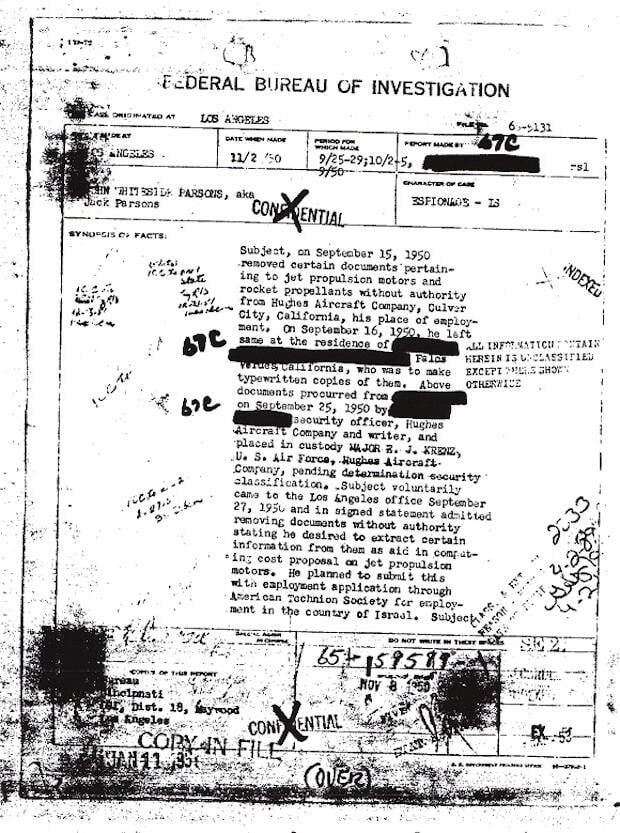
Public DomainAn FBI synopsis of espionage allegations against Jack Parsons from November 1950.
An expert though he was, Parsons never ceased the reckless backyard rocketry experiments he’d been carrying out since he was a child. And in the end, that’s what finally did him in.
On June 17, 1952, Jack Parsons was creating pyrotechnics for a film project in his home laboratory when an accidental detonation destroyed the lab and killed him. The 37-year-old was found with broken bones, a missing right forearm, and half of his face nearly ripped off. His reported last words were, “But I’m not finished yet.”
Authorities ruled the death an accident, theorizing that Parsons had simply slipped up.
However, that hasn’t stopped some of Parsons’ friends (and plenty of conspiracy theorists) from suggesting that Parsons would never have made such a deadly mistake — and that the U.S. government simply wanted to get rid of the now-embarrassing icon of American scientific history for good.
After learning about the turbulent life of Jack Parsons, read up on these other mad scientists from history. Then, discover the story of Michele Miscavige, the wife of Scientology’s leader who seemingly vanished in 2007.





